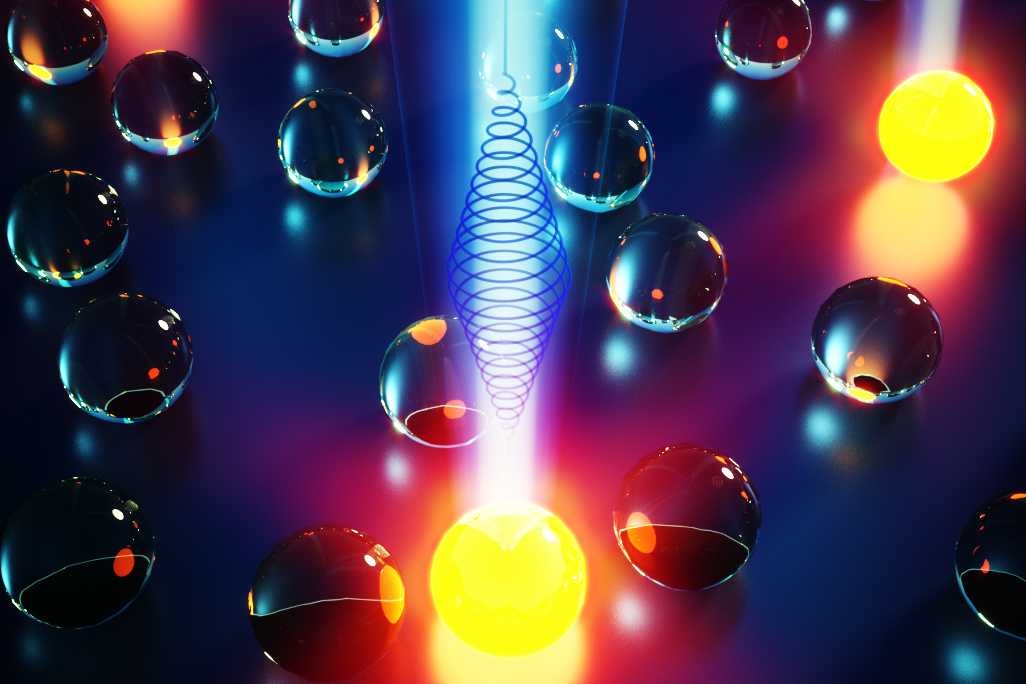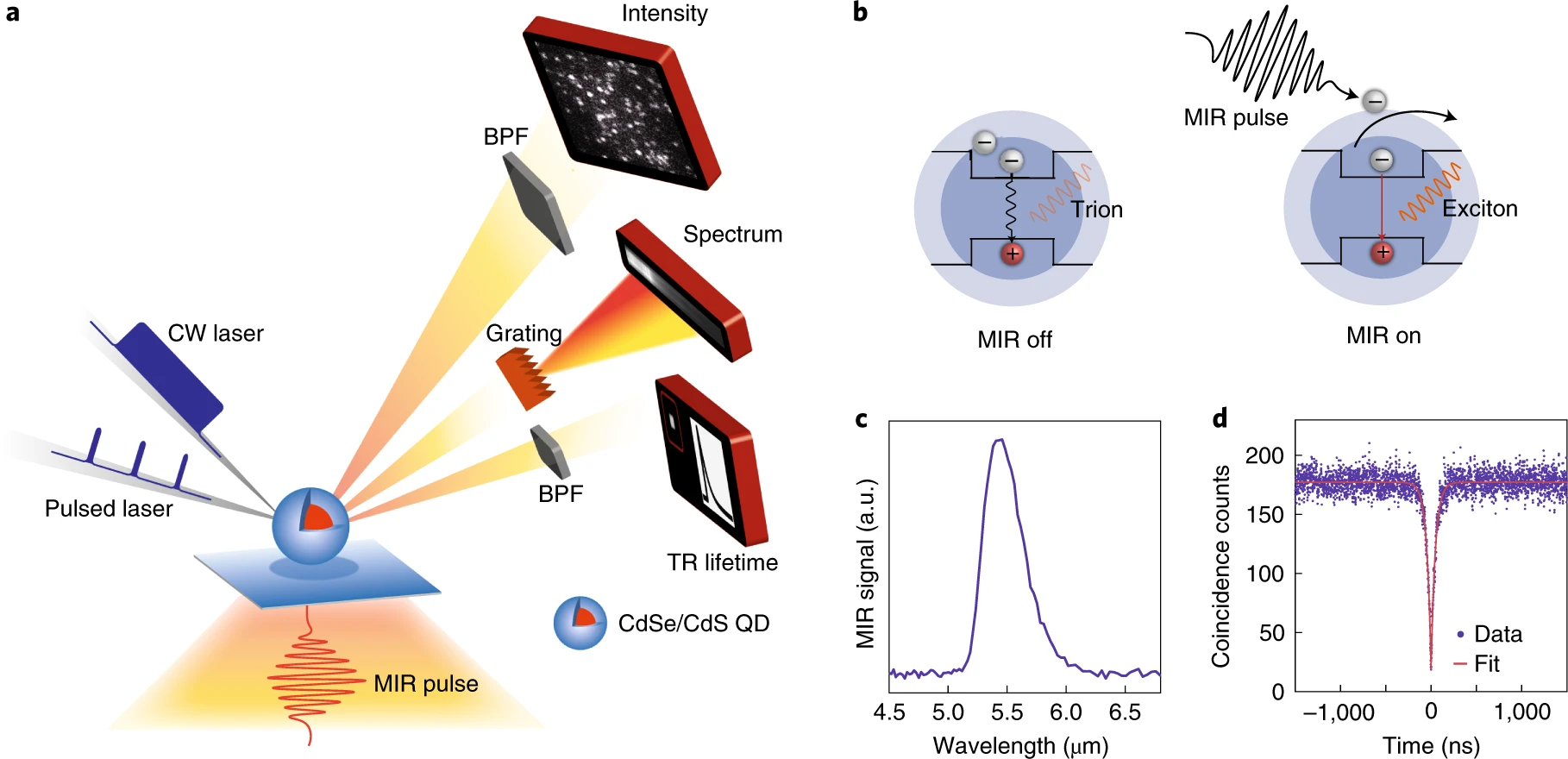Controlling the Blinking of Quantum Dots

MIT chemists have come up with a way to control the unwanted blinking of quantum dots, depicted here as yellow spheres, without requiring any modification to the formulation or the manufacturing process. Image courtesy of the researchers.

a, Schematic illustration of a single CdSe/CdS QD with MIR pulse excitation and various PL probes, including PL intensity, PL spectrum and (with pulsed rather than CW photoexcitation) time-resolved (TR) PL lifetime measurements. BPF, bandpass filter. b, In the conventional charging model for PL blinking, ON and OFF periods correspond to a neutral nanocrystal (exciton) and a charged nanocrystal (trion), respectively. During the OFF periods, ultrafast MIR fields can effectively remove the excess charge in a trion and convert it to an exciton. c, The spectrum of MIR pulses is centred at ~5.5 μm with a bandwidth of ~0.5 μm. a.u., arbitrary unit. d, The second-order PL intensity correlation function g2(t) measured at time zero t = 0 for a single QD indicates that g2(0) = 0.1. Image: Shi, J., Sun, W., Utzat, H. et al. All-optical fluorescence blinking control in quantum dots with ultrafast mid-infrared pulses. Nat. Nanotechnol. 16, 1355–1361 (2021).

